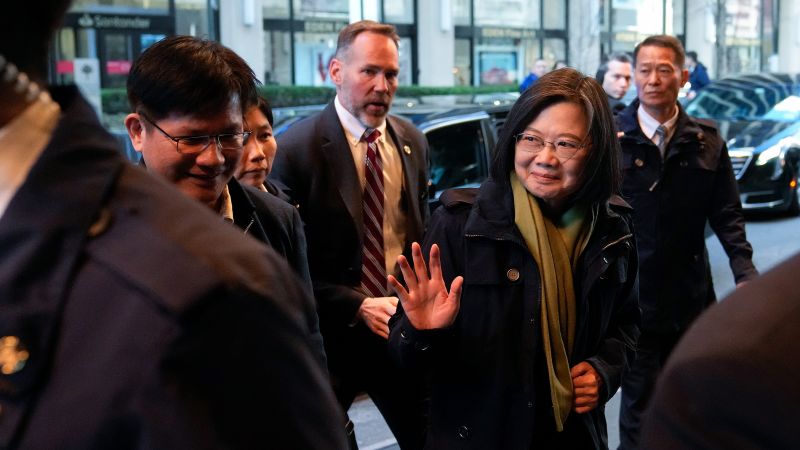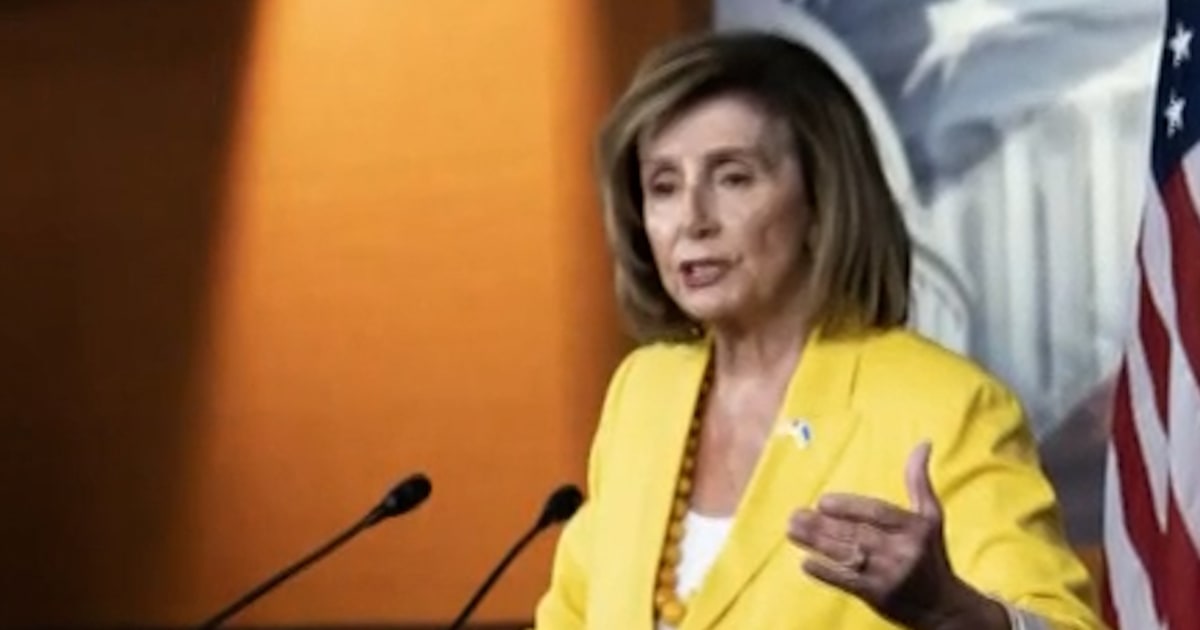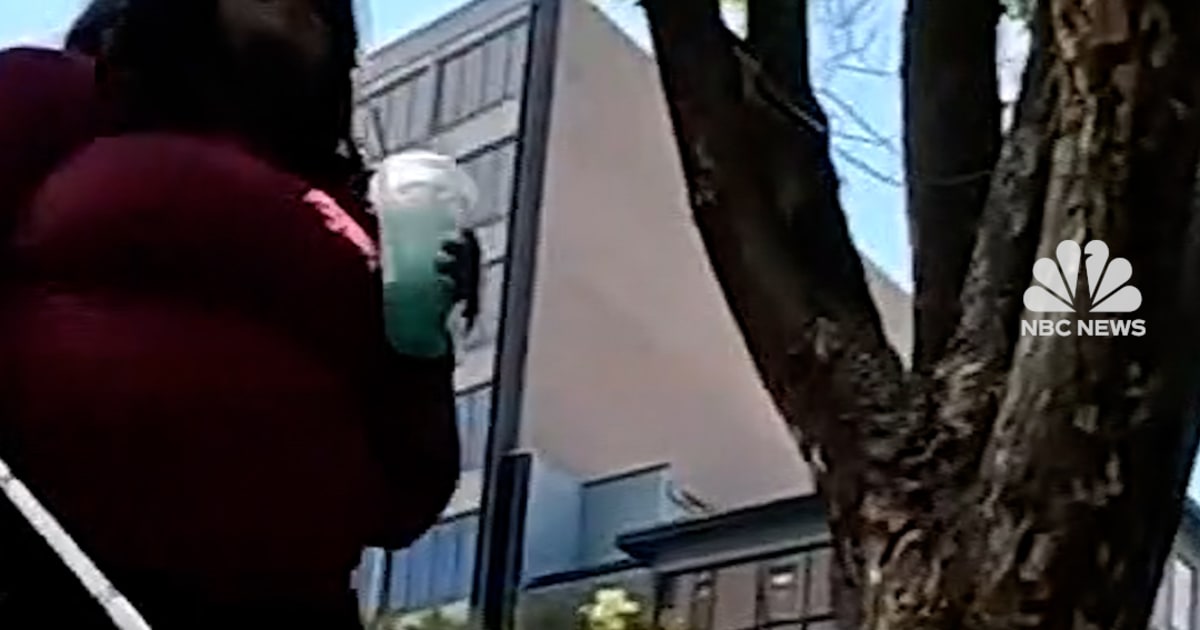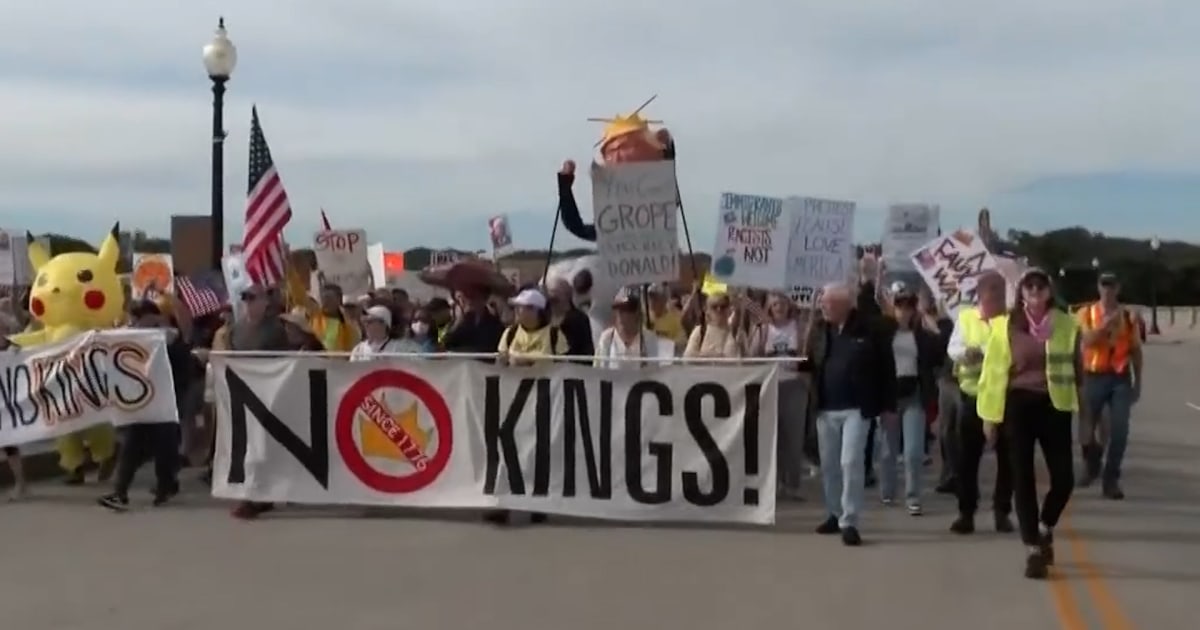Hong Kong
CNN
—
An anticipated meeting between Taiwan’s President Tsai Ing-wen and US House Speaker Kevin McCarthy in California this week has sparked concerns of a repeat of the pressure campaign China launched last year when then-Speaker Nancy Pelosi visited Taipei.
At that time, Beijing encircled the island democracy with unprecedented military drills – firing multiple missiles into its surrounding waters and sending dozens of warplanes speeding across a sensitive median line dividing the Taiwan Strait.
It also cut off contact with the United States over a number of issues from military matters to combating climate change, in retaliation for what it viewed as a violation of its sovereignty.
This time, Beijing has already threatened to “resolutely fight back” if a Tsai-McCarthy meeting goes ahead.

See why tensions are rising between US and China over Taiwan
It also slammed Washington for allowing Tsai to stopover in the US while en route to and from official visits in Central America, warning it could lead to “serious” confrontation between the two powers.
A defiant Tsai staked out her own ground, pledging as she took off on her 10-day trip not to let “external pressure” stop Taiwan from connecting with the world and like-minded democracies.
But the optics of the meeting, taking place in California and not Taiwan, and its timing – at a particularly thorny moment in China’s foreign relations and ahead of a presidential election in Taiwan that could reset the tone of its relationship with Beijing – may see Beijing tread more carefully this time, or at least not escalate further, analysts say.
“This puts the burden on China not to overreact, because any overreaction is only going to push China further away from the world,” said Yun Sun, director of the China Program at the Stimson Center think tank in Washington.
That doesn’t mean, however, that Beijing won’t be closely watching Tsai’s movements as it calibrates its response – and decides how much military might to flex over her meeting with an American lawmaker on American soil.
The opacity of China’s system – and the potential for competing interests within its vast bureaucracy – also make it difficult to accurately predict its response.
“Every time Taiwan does anything that China doesn’t like, the Chinese react with their own military coercion,” Sun said. But in the current situation, “they have to consider the consequences of overreaction,” she added.
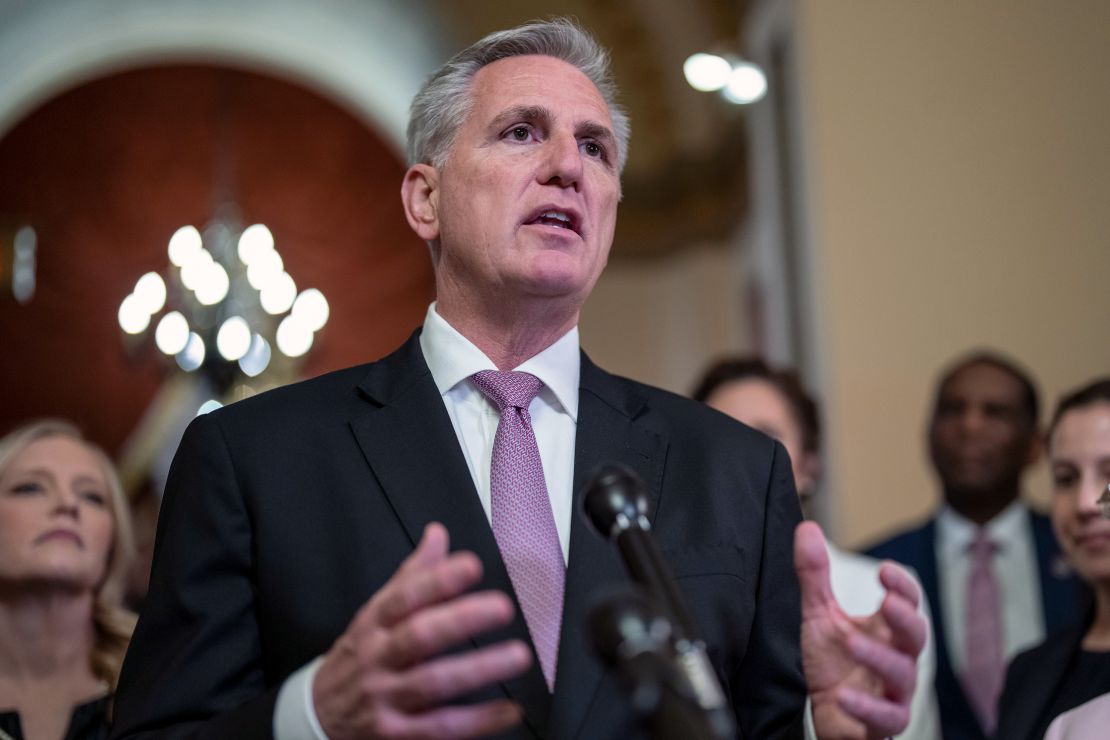
The expected meeting, which McCarthy’s office announced earlier this week would take place on Wednesday, also comes at a precarious moment in US-China relations.
Washington and Beijing are struggling to stabilize their communication amid flaring tensions over issues from a downed suspected Chinese surveillance balloon to semiconductor supply chains – raising the stakes of potential damage to that relationship if Beijing lashes out as it did when Tsai met Pelosi.
Taiwan is still feeling the fallout of that response last August, with Chinese military forces now regularly making incursions over what had previously been an informal but largely respected border of control between Beijing and Taipei in the Taiwan Strait. Taiwan’s official Central News Agency also reported Monday that Tsai would meet with McCarthy, citing Tsai’s presidential office.

See image of a Chinese balloon hovering over Taiwan
But a meeting between Tsai and the leader of the Republican majority in the US House of Representatives, who ranks second in line to the Presidency, would mark another symbolic moment for Taiwan and the US, which only maintain unofficial ties.
For Tsai, who is entering the final year of her two-term presidency, “it’s clearly a capstone event,” according to Wen-Ti Sung, a political scientist at the Australian National University’s Taiwan Studies Program. “She has this image as the Taiwanese president who has taken US-Taiwan relations to new heights, and who … has been able to give Taiwan almost unprecedented international visibility,” he said.
That increased visibility – and enhanced cooperation with the US – has followed China’s mounting pressure on the island, which sits fewer than 110 miles (177 kilometers) from the mainland coast.
China’s Communist Party claims the self-governing island democracy as its own despite never having controlled it, and has vowed to take the island, by force if necessary.
The party has undertaken a sweeping expansion of its military capabilities over the past decade under leader Xi Jinping – and ramped up its pervasive economic, diplomatic and military pressure on Taiwan.
That’s driven concerns, among some in Washington, that Beijing is preparing for an invasion, though China’s official language still suggests that scenario is not its preferred option for achieving the claimed goal of “reunification.”
It is those pressures – and how to support Taiwan against unilateral actions by Beijing – that are likely to be on the table when Tsai, McCarthy and a bipartisan group of US lawmakers sit down on Wednesday.
Congress has been a pillar of increasing American support for Taiwan in recent years. Lawmakers regularly visit the island and drive bipartisan legislation enhancing support and cooperation.
While the US switched its diplomatic relations to Beijing decades ago, it maintains unofficial ties with Taiwan and is bound by law to provide the democratic island with the means to defend itself.
Under Washington’s longstanding “One China” policy, the US acknowledges China’s position that Taiwan is part of China, but has never officially recognized Beijing’s claim to the island of 23 million.
Though McCarthy does not have Pelosi’s decades-long record of advocacy regarding China, the California Republican is now a leading voice pushing for closer scrutiny of Beijing, and meeting Tsai could help him to burnish that image.
Last month, McCarthy told reporters that meeting Tsai in the US would not impact whether he travels to Taiwan in the future – something he had earlier said he wanted to do.

A meeting in California, on US soil, is widely seen as less likely to provoke Beijing than a McCarthy visit to Taiwan.
Pelosi’s trip – the first from a lawmaker of that rank to the island in 25 years – generated a fever pitch of nationalist and anti-US rhetoric in mainland China.
This time, so far, domestic conversation in China’s heavily controlled media sphere has been significantly muted.
But the stakes remain high – including for Beijing itself – over how it responds, analysts say.
As Taiwan prepares for a presidential election in January, a fierce response could push voters away from Taiwan’s main opposition party Kuomintang (KMT), widely seen as more friendly toward Beijing.
It could also jar with another high profile trip happening now: a tour of mainland China from former Taiwan president and senior KMT member Ma Ying-jeou, the first visit from a current or former Taiwan leader since the end of the Chinese Civil War in 1949.
Ma’s tour is a “once in a half a century opportunity to send a conciliatory message between the two sides, Beijing shouldn’t want to tank that,” said Sung, the political scientist.
China is also acutely aware that its actions toward Taiwan are under a significantly brighter global spotlight following the invasion of Ukraine by Russian President Vladimir Putin, a close diplomatic partner of Xi. Putin’s rhetoric over Ukraine has echoes of how Xi speaks of Taiwan.
Beijing has recently sought to position itself as an agent of peace in that conflict – especially as it aims to repair frayed ties with Europe.
This week, as Tsai is expected to meet with McCarthy, French President Emmanuel Macron and European Commission President Ursula von der Leyen will head to China – an important opportunity that Xi may not want to overshadow with military posturing.
An aggressive response also risks stoking confrontation with the US, not yet six months after Xi and US President Joe Biden called to enhance communication during a face-to-face meeting in Bali.
“(A less overtly aggressive response) would imply that Beijing does not wish to escalate tension with the US to a level that can risk getting out of hand,” said Steve Tsang, director of the SOAS China Institute in London.
“A reset in US-China ties is not on the agenda, but an easing of tension is not beyond the realm of possibility.”
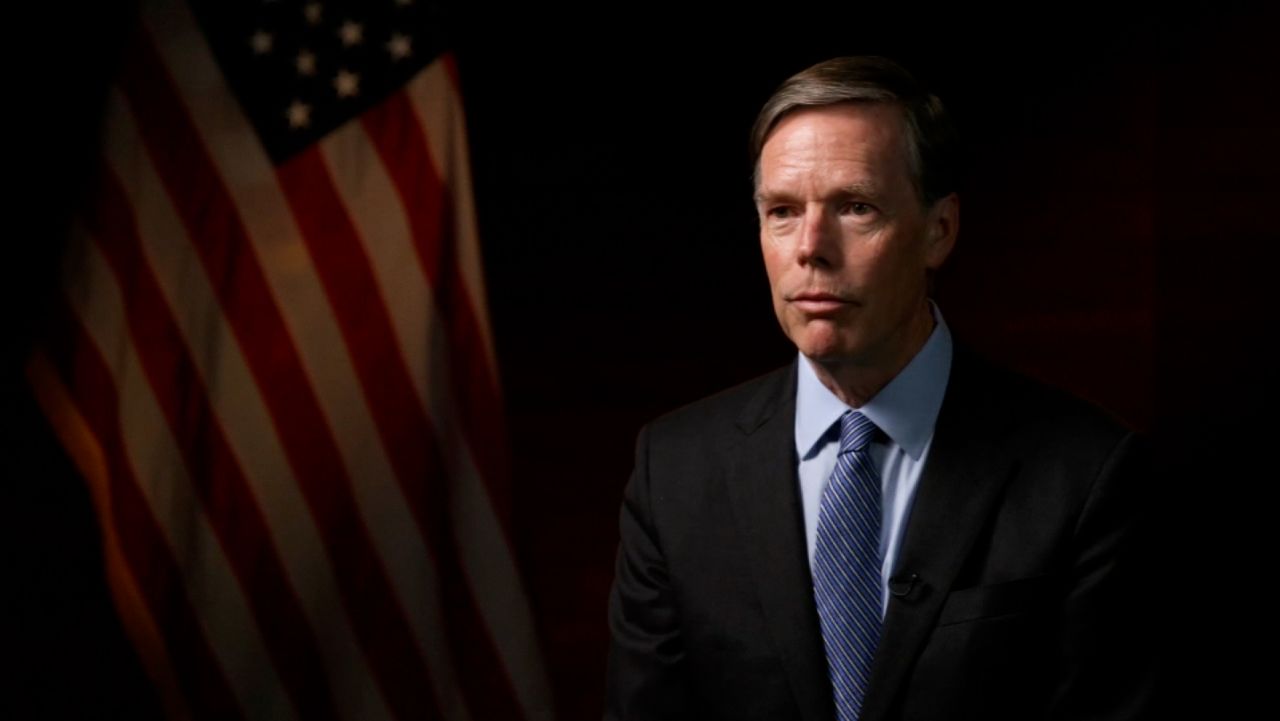
Breakdown in US-China relations a ‘manufactured crisis,’ US ambassador says (August 2022)
